We’ve picked some of our favorite pieces for the art lover on the go. Get a little bit of everything with a side of context that pulls the whole experience together.
This self-guided tour will lead you through the second floor collection galleries. The gallery numbers can be located on the floor in the doorways.
Gallery 5
Square Dance
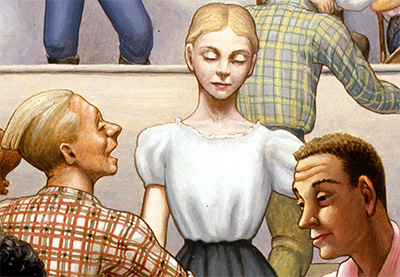
A social realist, Kyra Markham painted scenes of American life like to this Post-war scene. The vibrant colored clothing and jovial expressions of the community members contrast the restrained expression of the lone figure in the center of the room. What do you think her expression might mean?
Gallery 8
Book of Hours
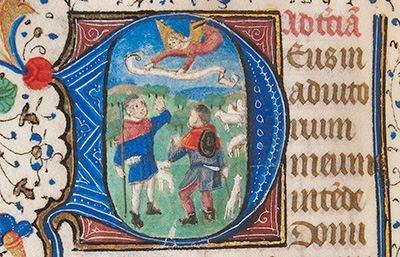
Illuminated manuscripts are embellished texts decorated with gold or silver leaf. The artist used inks and tempera paints to create books like this by hand. This Book of Hours centers around the Virgin Mary, with a set of prayers to be recited in the home at eight different times of the day, just as monks publicly chanted prayers during the eight monastic hours.
Gallery 8
Silver River, North Carolina
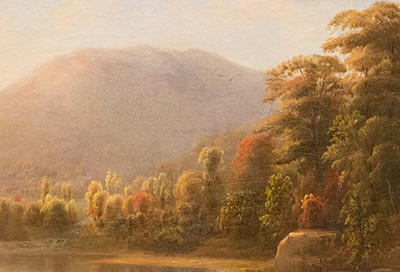
Robert S. Duncanson became esteemed as a landscape painter in the mid 19th century, a time when this feat was particularly impressive for an African American man. Here, he has painted the mountains in the background paler to give the piece depth, a technique called aerial perspective.
Gallery 12
Cross Check
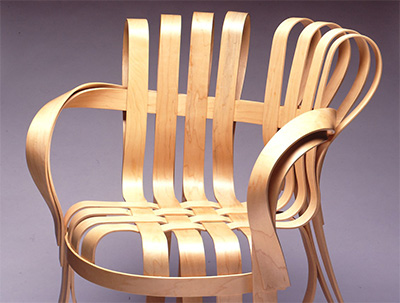
Architect and Designer Frank Gehry used a bentwood technique to create this chair. Wood is soaked or steamed to make it pliable and then shaped. Once dried, the wood retains its bend. Gehry—a Canadian—named the chair Cross Check because it reminded him of hockey sticks.
Gallery 13
Armoire
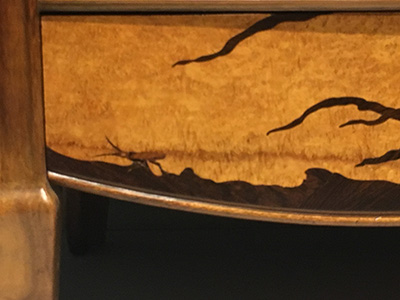
Louis Majorelle’s armoire embodies Art Nouveau style with a natural theme, organic shapes, and asymmetry. Marquetry, a technique in which pieces of wood are put together like a puzzle, creates the images of birds, flowers, and the grasshopper (which the CMA has adopted as our childrens’ mascot, Gladys).
Gallery 18
Vase with Treescape Design
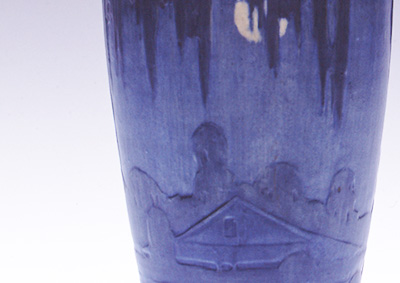
Inspired by the nature of Louisiana, Sadie Irvine drew scenes such as this landscape directly onto leather-hard ceramic vessels. She would then free-hand carve into the clay to reveal a relief of the image. Irvine studied and taught at Newcomb College in New Orleans, which had been founded expressly to instruct young women in pottery, printmaking, embroidery, and bookmaking.
Gallery 20
Cape III
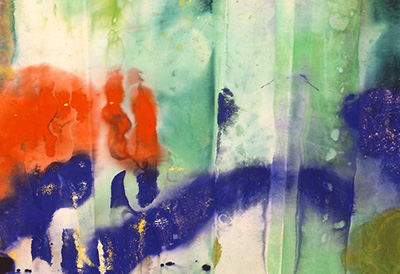
Although not an organized movement, the Washington Color School of the 1960s represented a very important evolution in abstract art through the possibilities of clear, bright color. Painter Sam Gilliam experimented by taping and pouring colors, and staining and folding canvases. Around 1965, Gilliam became very influential by introducing the idea of unsupported canvases by draping them from ceilings and piling them on floors, adding a sculptural element to his work.